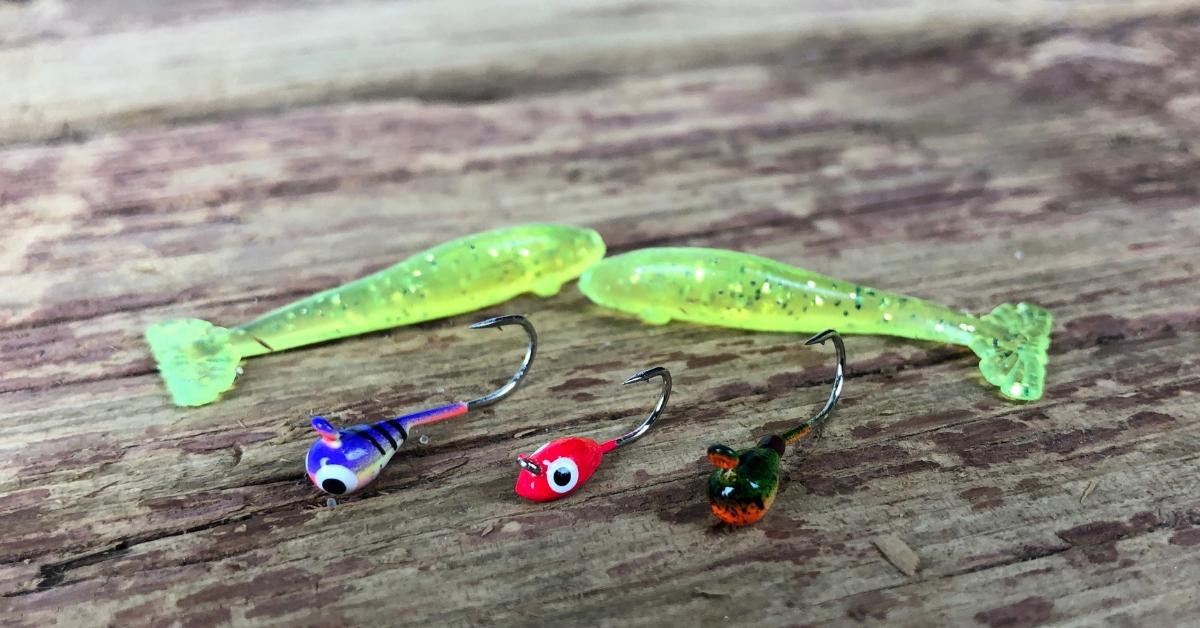How To Choose The Right Colors For Ice Fishing Lures
If you asked 5 ice anglers their favorite color my bet is you'll get at least 3 different answers. There is no doubt certain colors work better than others but personal preference and recent catch bias plays a big factor in decision making.
Each year the industry cranks out lures with new fancy colors that anglers suck up the same way a hungry smallmouth slurps up a crayfish. While some of these colors are true advancements in fishing and help garner more bites, there are also quite a few colors patterns designed to catch more anglers than actual fish.
Keeping a checklist in mind while selecting colors will help maintain a logical approach while keeping the process simple. Once you’ve decided on a target species it’s time to think about water clarity, time of day, and the forage base that swims in the body of water that you happen to be fishing.
Best Ice Fishing Colors Based On Water Clarity
The general rule of thumb is to use neutral or natural colors in clear water and louder or more vibrant colors in stained water. Clearwater fish have keen eyesight when compared to fish swimming in stained water fish so keeping a natural look is key.
The ability to see decreases in stained water so selecting colors with a lot of contrast is a good option. Shiny baits do an excellent job at maximizing light with their reflective qualities so having a gold or silver presentation on hand is a great stained water choice.
As the sun fades away colors will begin to take on a new look in the water as there is little light for your lure to absorb. Surprisingly bright colors like reds, yellows, and oranges are the first to fade at night blue and green remain the most visible in deep, dark water. Once the sun completely sets fishes ability to distinguish colors will be pretty much lost so it really won’t matter what you choose. When fishing at night choose something that either glows in the dark or something that shines in the effort to catch the reflection of any available light. Focus on vibration and scent at night before you worry about selecting colors.
Best Ice Fishing Colors Based On Forage
If you go fishing long enough you’ll eventually hear the term ‘Match The Hatch’. This means to match your bait presentation with the forage that your target species are feeding on.
Observation and sampling are a good way to cut down on guesswork but also don’t forget to do research online as well, oftentimes state websites will provide a list of confirmed species that have been documented in that lake.
Factoring In The Conditions: Snow And Ice Thickness
Early Late Ice: When fishing thin ice, safety is the number one priority. Use all necessary safety precautions before venturing out. No fish is worth risking your life!
Natural and primary colors work really well during early and late ice. Under thick ice, I like to use glow colors with bright finishes.
Snow Cover: Same as above: Go natural with no snow cover in clear water, and choose incrementally brighter colors as the snow deepens. Under thick ice and heavy snow, it’s dark down there. One of the most consistent colors used by experts in these conditions is glowing orange, green and yellow coupled with bright metallic flash matching the watercolor. Using bright colors will help fish key in on your bait from further away which usually helps illicit more strikes.
The Best Ice Fishing Colors For Shallow and Deep Water
In shallow water, successful colors tend to be more natural. The deeper the jig has to go, the more fluorescence or glow coupled with the bright flash it should have. However, under thin ice on bright, sunny days in clear water, don’t be surprised if a duller, more natural shade attracts more strikes. But also consider how reds become gray only a few feet down, followed closely by orange and yellow, while colors at the blue-green end of the spectrum tend to remain visible much deeper—all due to wavelength.
Wider frequencies in the wavelength of colors cause them to disappear quicker. But fluorescent and glow paints of all shades maintain color much deeper than standard finishes.
Updated October 6th, 2021 at 3:49 AM CT


